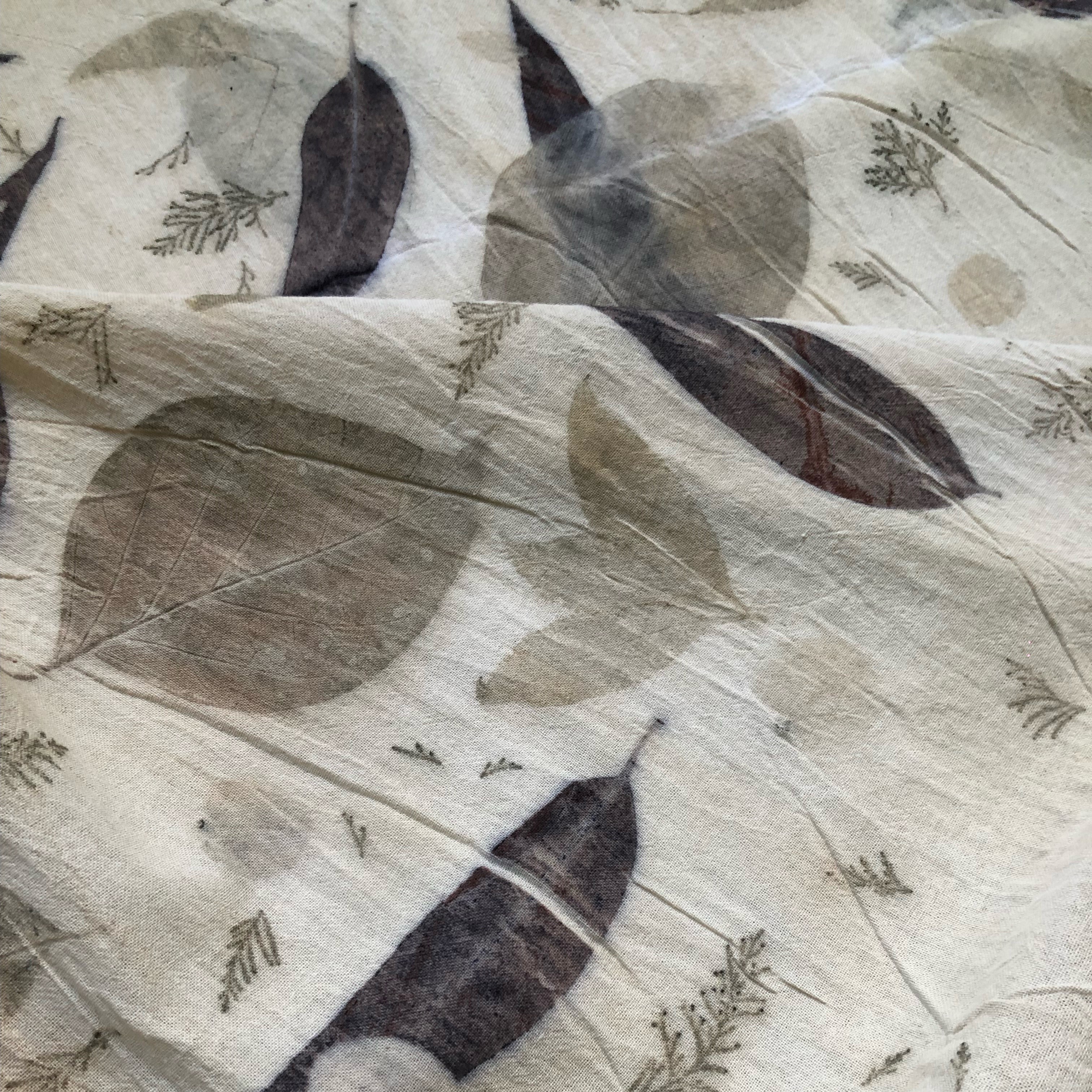The Study of Differences in Color Adhesion of Plants: Natural Mordant Experiments with the Eco-Printing Technique
DOI:
https://doi.org/10.69598/sbjfa259409Keywords:
Eco-printing, Mordant, Natural vegetationAbstract
This study is part of the research on natural dyes utilizing various mordants. The purpose is to examine artwork’s creativity, development process, and the benefits of dyeing with natural plants and mordants. The experiment involves dyeing fabrics using the Eco-printing technique, employing plants that can be found in all seasons and have distinct shapes. The study revealed that the creative and artistic development process usually begins with selecting natural plants or leaves with diverse shapes or characteristics that originate within the artist’s community. In this study, mordants were incorporated into the Eco-printing process to enhance the adhesion of natural dyes. Mordant, or the dyeing agent, enables fabric fibers to absorb natural dyes, resulting in different shades of colors that can be employed in various works. There are four noticeable points to be considered during the process of dyeing experiment with the Eco-printing technique: 1) Preparation of mordants: Several materials can be used, depending on its property; iron rust water provides zinc, fermented pineapple water contains acetate, and lye water from the plant can convert acetic acid to iron. Acetate and salt help intensify the color during the dyeing process. 2) Fabric preparation: Priority should be given to natural fibers since they exhibit better color adhesion, resulting in more distinct patterns. The prepared fabric was soaked in mordants, squeezed to remove excess agents, and left to air dry. Each type of mordant possesses different characteristics that affect the resulting color, suggesting the idea of developing a more suitable mordant formula for dyeing purposes. 3) Some plant leaves do not provide color, and the climate conditions can affect the color obtained; for example, eucalyptus and pine leaves must be trimmed properly to facilitate easy attachment to the dyed fabric. 4) Steaming process: The plastic wrapping process should be tightly secured to ensure maximum contact between the plastic wrap and the fabric while avoiding the formation of wrinkles. The duration of the steaming can affect the adhesion of the color. Maintaining a consistent temperature throughout the steaming process facilitates effective color adhesion and enables artwork development.
Downloads
References
เฉลิมพร ทองพูน. (2557). การย้อมสีด้ายฝ้ายโดยใช้น้ำย้อมธรรมชาติจากเปลือกต้นกระท้อน. มหาวิทยาลัยราชภัฏพิบูลสงคราม สถาบันวิจัยและพัฒนา.
ณัฐธิดา ภู่จีบ. (2565). การศึกษาสีย้อมจากพืชพรรณธรรมชาติและมอร์แดนท์เพื่อพัฒนาลายผ้าผ่านเทคนิค Eco-printing. รายงานวิจัยฉบับสมบูรณ์ โดยทุนสนับสนุนโครงการวิจัยของคณะศิลปกรรมศาสตร์ มหาวิทยาลัยศรีนครินทรวิโรฒ ประจำปีงบประมาณ 2563. (Qwe, 1922).
ศรันยา เกษมบุญญากร. (2555). สีธรรมชาติ: ความเคลื่อนไหวของสิ่งทอเชิงอนุรักษ์. วารสารคหเศรษฐศาสตร์, 55(1), 63-65. https://thea.or.th/wp-content/uploads/2019/09/thea-journal-1-jan-2555.pdf
ศรันยา คุณะดิลก และกัญญา ภัทรกุลอมร. (2555). การย้อมไหมด้วยสีธรรมชาติโดยใช้แทนนินสกัดจากใบมันสำปะหลังเป็นสารช่วยติด. รายงานฉบับสมบูรณ์โครงการบริการวิชาการและถ่ายทอดเทคโนโลยีทางด้านเกษตร. สาขาสิ่งทอและเครื่องนุ่งห่ม ภาควิชาคหกรรมศาสตร์ คณะเกษตร มหาวิทยาลัยเกษตรศาสตร์.
อรรถพนธ์ พงษ์เลาหพันธุ์. (2563). การคาดการณ์แนวโน้มแฟชั่นและการออกแบบแฟชั่นในศตวรรษที่ 21. ศิลปกรรมสาร มหาวิทยาลัยธรรมศาสตร์, 13(1), 131-144.
Dekel, S. (2021). 5 Different Mordants in Eco-printing Printing. https://www.suzannedekel.com/post/5-different-mordants-in-Eco-printing
Kasembunyakorn, S. (2012). Natural color: movement of conservative textiles. Journal of Home Economics, 55(1), 63-65. https://thea.or.th/wp-content/uploads/2019/09/thea-journal-1-jan-2555.pdf [in Thai].
Khunandilok, S. & Phatarakunamorn, K. (2012). Effect of tannin mordant on skill dyed with cassava leaves: Technology transfer and evaluation dye formulas training. Final report annual. Department of home Economics, Faculty of Agriculture, Kasetsart University. [in Thai].
Ponglawhapun, A. (2020). Fashion trend forecast and fashion design in the 21st century. The Fine & Applied Arts Journal. 13(1), 131-144. [in Thai].
Pujeeb, N. (2565). A study of Nature Dye Color and Mordant for Developing Patterns by Eco-printing Technique. Full Research supported by Srinakarinwirot University's Faculty of Fine Arts research fund, 2020 academic year. [in Thai].
Thongpoon, C. (2014). Dyeing cotton yarn with natural dye from Satol bark. Research and development institute of Pibulsongkram Rajabhat University. [in Thai].
Wangatia, L. M., Tadesse K. & Moyo S. (2015). Mango Bark Mordant for Dyeing Cotton with Natural Dye: Fully Eco-Friendly Natural Dyeing. International Journal of Textile Science. 4(2), 36-41.

Downloads
Published
How to Cite
Issue
Section
License
Copyright (c) 2023 © by the Author(s) & Silpa Bhirasri Journal of Fine Arts.

This work is licensed under a Creative Commons Attribution-NonCommercial-NoDerivatives 4.0 International License.
The journal's editorial team does not have to agree with the views and comments in the author's article, nor are they responsible for the comments.











